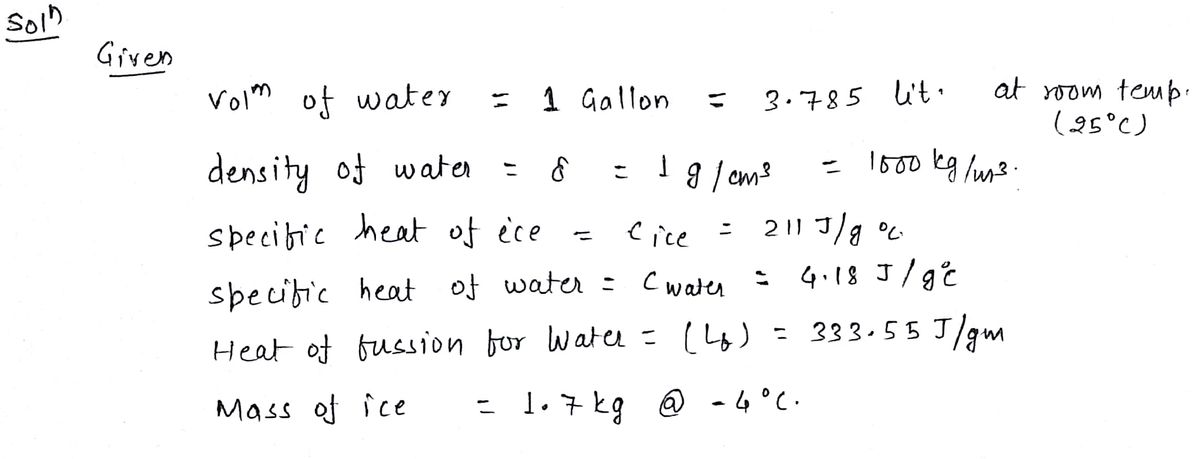One gallon of water, which is in a bottle at room temperature of 25 °C, is poured over 1.7 kilograms of ice that is at -4 °C. Assuming that it is in a perfectly insulated container that does not change temperature, how much ice and how much water is in the final mixture? The specific heat of ice is 2.11 J g-1 °C-1 and water is 4.18 J g-1 °C-1; heat of fusion for water is 333.55 J g-1; and assume water density is 1.0 g cm-3.
Energy transfer
The flow of energy from one region to another region is referred to as energy transfer. Since energy is quantitative; it must be transferred to a body or a material to work or to heat the system.
Molar Specific Heat
Heat capacity is the amount of heat energy absorbed or released by a chemical substance per the change in temperature of that substance. The change in heat is also called enthalpy. The SI unit of heat capacity is Joules per Kelvin, which is (J K-1)
Thermal Properties of Matter
Thermal energy is described as one of the form of heat energy which flows from one body of higher temperature to the other with the lower temperature when these two bodies are placed in contact to each other. Heat is described as the form of energy which is transferred between the two systems or in between the systems and their surrounding by the virtue of difference in temperature. Calorimetry is that branch of science which helps in measuring the changes which are taking place in the heat energy of a given body.
One gallon of water, which is in a bottle at room temperature of 25 °C, is poured over 1.7
kilograms of ice that is at -4 °C. Assuming that it is in a perfectly insulated container that does
not change temperature, how much ice and how much water is in the final mixture? The specific
heat of ice is 2.11 J g-1 °C-1 and water is 4.18 J g-1 °C-1; heat of fusion for water is 333.55 J g-1;
and assume water density is 1.0 g cm-3.

Step by step
Solved in 3 steps with 3 images









